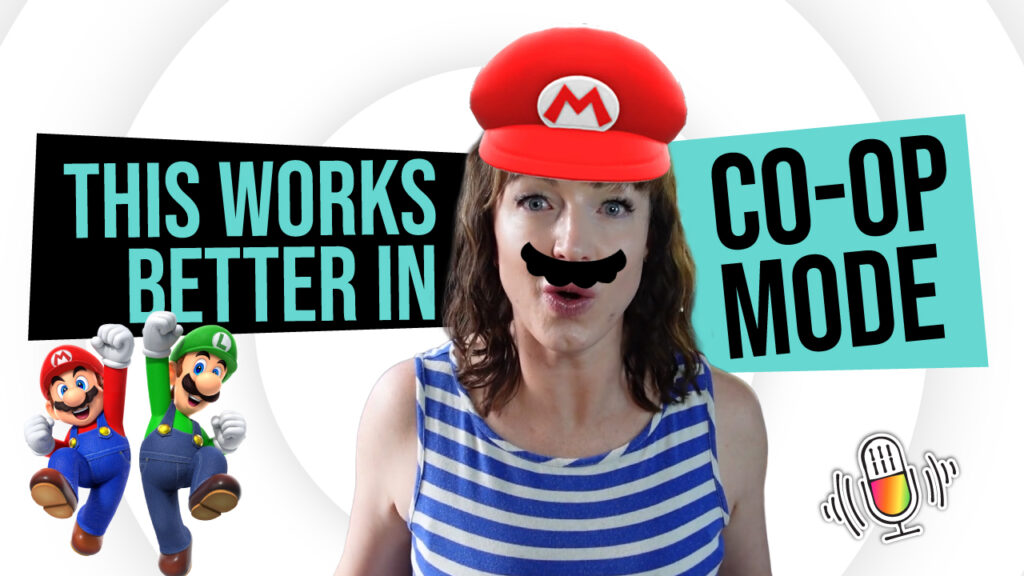When HR and L&D Work Together, Everything Changes

If you’re the kind of person who lights up when someone grows, shifts, or steps into their potential, you’re in the right line of work. And chances are, you already know that when HR and L&D work together, everything changes.
You probably also already know that Learning and Development isn’t about ticking boxes or pushing out content. It’s about shaping futures. It’s about helping people do their jobs better, grow faster, and believe in themselves more.
And when Learning and Development (L&D) joins forces with Human Resources (HR) under a shared vision, we don’t just improve training, we transform the business.
Let’s dig into what this partnership can be, and how to get there, even if you’re not the one writing the org chart.
Why HR and L&D Feel Disconnected (But Shouldn’t Be)
Historically, HR and L&D have operated like two trains on parallel tracks. HR manages the people systems, hiring, policies, performance. L&D handles the learning experiences, onboarding, workshops, eLearning.
Different focuses. Same people.
And yet, you’ve probably seen where our worlds collide:
- A better onboarding experience reduces turnover.
- A great leadership program changes team dynamics.
- Learning drives performance, confidence, and culture.
But despite the natural overlap, we still often work in silos. Gartner reports that only 28% of HR leaders say their workforce planning is aligned to business strategy. And if HR isn’t aligned to strategy, L&D is flying blind.
That’s how we end up launching courses without knowing the real capability gaps. Or building content with no clarity on the roles it’s meant to support. And it’s frustrating, for everyone.
It doesn’t have to be this way.
What Happens When HR and L&D Align
It should be as natural and Mario and Luigi (and yes, we have a sense of humor 😊)

The best organizations aren’t waiting until problems show up to involve L&D. They’re bringing us in early. Before there’s a need. Before the gaps show.
In these organizations, L&D and HR:
- Build capability maps together
- Align on success metrics before designing learning
- Share ownership of outcomes, not just attendance rates
And it works.
Lattice found that the highest-performing HR teams embed L&D into their overall people strategy. The result? Better engagement, higher retention, and stronger leadership pipelines. Not because of a single standout program, but because everything is moving in the same direction.
Still, many HR teams say they value learning but haven’t yet built the systems to support it. That’s where things often break down, not in intention, but in execution.
And this is the opportunity. If we already believe in the value of learning, it’s time to make that belief operational.
From Training Requests to Strategic Impact
When HR and L&D truly partner, we stop reacting to requests and start anticipating needs.
Instead of being asked to “roll out a training,” we’re asked, “What do we need to change?”
This shift, from service provider to strategic partner, makes everything better:
- Performance improves
- Turnover decreases
- Readiness increases
Bravely’s 2025 strategy report shows that organizations with strong HR-L&D partnerships see 4x the improvement in business performance and employee retention.
It’s not about being louder or doing more. It’s about getting closer to the core of the business and showing how learning can solve real, strategic problems.
One key example? Workforce planning.
Right now, 66% of workforce planning is still just headcount-focused. We’re asking “how many people do we need?” but we should be asking “what do they need to be able to do?”
That’s where L&D leads. Not as a nice-to-have, but as a business-critical function.
“Okay, But I’m Not in Charge…”
You might be reading this and thinking, “Sure, this all sounds great, Candice, but I’m not senior enough to change how HR and L&D work together.” That’s a common hesitation, and I hear it often.
But here’s what I want you to know: you don’t need a fancy title or formal authority to start making an impact. You don’t need to own the org chart. What you need is curiosity, initiative, and a willingness to start the conversation.
Because often, what looks like a silo from the outside is really just a missed opportunity for connection on the inside. And connection starts with a single conversation.
Here’s how to start helping HR and L&D Work Together
Step 1: Book a coffee chat with someone in HR.
Reach out to someone in HR and ask to grab a virtual coffee or set up a 30-minute chat. Keep it informal. This isn’t about pitching a program or lobbying for a new initiative—it’s simply about learning. You might say, “Hey, I’d love to learn more about what your team is focused on this quarter.”
Then, in that conversation, ask a few thoughtful, open-ended questions:
- What business priorities are you currently focused on?
- What people challenges are showing up most right now?
- What roles are going to be critical over the next 6 to 12 months?
The goal here isn’t to sell anything. It’s to listen. To understand. Because the moment you hear something that makes you think, “Wait, we could help with that,” you’ve found your entry point. You’re not inserting yourself, you’re identifying a shared problem you can solve together.
Step 2: Map capability to outcome.
Once you’ve identified a challenge, maybe it’s inconsistent onboarding, or trouble retaining mid-level managers, start connecting the dots. Ask yourself: What would people need to know, do, or feel differently in order to solve this?
Then build a basic outline that links:
- The challenge HR is trying to solve
- The behavior that needs to shift
- The skills or knowledge required for that shift
- The learning experience that could support the change
This isn’t about creating a 20-slide deck. It’s about creating a simple, clear picture of how learning can drive performance.
Step 3: Share your thinking – without over complicating it.
Now that you’ve mapped the connection, share it back in a way that feels generous and collaborative. You might say, “Hey, you mentioned the team’s been struggling with onboarding consistency. I pulled together a quick idea of how we might approach that through capability building, want to take a look?”
You’re not pitching a big initiative or asking for permission. You’re offering insight. And that subtle difference builds trust and opens the door to future collaboration.
Step 4: Celebrate the small wins.
The partnership doesn’t have to start with a massive transformation. It might begin with a quick conversation that turns into a co-hosted session. Or an idea that gets you invited to a planning meeting. Or just a moment of recognition that your input helped clarify a challenge.
Whatever progress you make, share it. Reflect on what changed. Name it. Because those small wins compound over time. They become the foundation of a true partnership built on trust, shared purpose, and results.
Did you get invited to a planning meeting?
Did HR ask for your input on a project?
Did your idea spark a co-hosted session?
Share it. Reflect on it. Build on it.
And If You Ever Think: “This Is Above My Pay Grade”
Let’s reframe that.
Because at some point, you might find yourself thinking, “This is above my pay grade.” That reaction is understandable. After all, many decisions do rest with senior leaders, and there are real limits to what you can formally change without authority.
However, that doesn’t mean you have no influence. In fact, now is a perfect time to reframe what influence actually looks like.
Influence doesn’t have to start at the top. It often starts with something much smaller, like an idea, a new perspective, or the ability to spot a gap and raise your hand to say, “We could do this differently.”
You don’t have to control the strategy in order to shape it. You don’t need to wait to be invited into the room, you can start by showing up with value. Often, it’s the people on the ground who see what’s really happening, who understand the gaps in experience, and who can offer practical, thoughtful solutions.
If you’re the person who sees the distance between HR and L&D, and if you’re bold enough to want to close that gap, you’re already doing the work of a leader. Regardless of your title, that mindset is what drives change.
Three High-Impact Shifts You Can Make This Week
If you’re wondering how to take the first step, or you’re not sure where to start, here are three small but powerful actions you can take this week. These don’t require a full restructure or formal authority—just intention, awareness, and a bit of courage.
1. Add This One Line to Every Training Request
The next time someone asks for a training session, gently ask this question:
“What business result is this tied to?”
This small shift reframes the entire conversation. Instead of acting as an order-taker, you position yourself as a partner, someone who cares not just about delivering content, but about driving real outcomes.
2. Add This One Slide to Your Next Learning Deck
In your next presentation, carve out space for a slide that clearly shows:
Challenge → Behavior → Learning Solution
It doesn’t have to be fancy or overly designed. What matters is clarity. This slide shows that your learning experience is rooted in real needs and designed to influence meaningful change.
3. Use This One Phrase in Your Next Conversation with HR
When a topic comes up, whether it’s engagement, onboarding, or leadership, you can say:
“I’ve been thinking about how we could support that from a capability perspective.”
This simple phrase does two important things. First, it signals that you’re thinking strategically. Second, it invites collaboration. More often than not, it opens up a richer conversation about what’s really needed, and how L&D can help make it happen.
These actions may seem small. But they send a message: you’re not here just to deliver courses, you’re here to make a difference. And that message, repeated consistently, is what changes how others see the role of L&D in the business.
If you found those tips helpful and want more practical, no-fluff L&D insights like this, delivered straight to your inbox, join my weekly newsletter.
Every email is designed to help you think more strategically, speak the language of business, and build partnerships that actually move the needle.
👉 Join here – it’s free, useful, and super practical
Final Thoughts
When HR and L&D operate in isolation, it’s easy for opportunities to fall through the cracks. People get lost in the shuffle. Momentum slows. And progress stalls, not because of a lack of intention, but because the connection between strategy and learning never fully forms.
But when we come together, when we collaborate intentionally, build trust, and align our efforts, everything changes.
We stop reacting.
We start leading.
And we create organizations where people don’t just survive the workday, they grow, thrive, and stick around for the long haul.
So if this blog put into words what you’ve been thinking, or gave you a new way to frame the value of what you do, save it. Share it. Use it to start the next conversation.
Because you don’t need permission to make this better.
You just need a place to begin.
This work matters.
And you’re the exact right person to lead it forward.
Hi there, I'm Candice Mitchell!
Hi there,
I'm Candice Mitchell!
Meet the Author
I work with corporate clients carving out strategic Talent Development plans. I’ve been where you are now, and not only have I put in all the hard work and made all the mistakes that finally enabled me to get to a place of progression and impact that we talk of, but I’ve placed it all together in a signature program, The Talent Development Academy®.